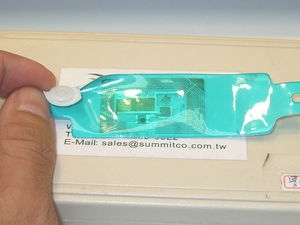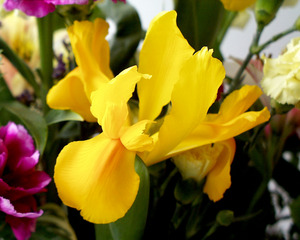Are you drooling after all of those designer copper goodies that are out on the market this year? Many of us are, but those price tags are a bit “iffy” with gas prices so high, and food prices continuing to rise. Yet, that 200.00 (or more) hammered copper bird bath would look so nice out on the porch. There has to be a way…
Choosing Copper Sheeting:
Copper sheeting comes in different thicknesses called Mil in the product descriptions. 1 Mil is about the thickness of aluminum foil, and 16 Mil will hold any shape that you would like it to stay in. When working with copper for freestanding (un-backed) items it is best to use10 Mil for decorations and 16 Mil copper for items that may have hard use.
Copper Needed For Hanging Birdbath:
You will want to decide how big you would like your hammered copper birdbath to be. The common size for these hammered copper birdbaths in the online catalogs seems to be about 22 inches across the center. To achieve this size, you will need to buy a piece of 16 Mil copper sheeting that is about 24-inches by 24-inches square.
Note: It is not mandatory that you work with the sizes that I am giving, you can make your hammered copper birdbath any size that you would like it to be. Just be aware that a round hammered copper birdbath is the easiest shape to achieve without practice.
The Web site called Basic Copper often has nice sales on their sheet copper, and they also offer scrap copper packages to use in craft projects. Click here to see their 36.89 sale price on a sheet of 16 Mil 24-inch by 24-inch copper for this hammered birdbath project.
Hammered Copper Birdbath Step One: With a pair of tin snips cut the corners off of your pieces of square copper sheeting so that it is now in the shape of a rough circle. Be careful, the edges will be sharp. There is no need to be neat with your circle yet, we will clean up the edges later.
Hammered Copper Birdbath Step Two: Learn how to hammer copper on your scrap corner pieces. Try hammering on your copper with leather tools, mallets, specialty hammers, the cast iron duck holding the door open, and whatever else strikes your fancy. Try putting wood, old carpet, cement, or a rock under your scrap copper as you play. You will find that everything makes a different kind of pattern; pick out your favorite hammering tool to work with. You want one that will not make any holes as you are working on your big piece of copper. A ball ping, ball peen, or ball peen hammer is a hammer that has a rounded ball point on one side; this is my favorite pounding tool for copper.
Hammered Copper Birdbath Step Three: When you think that you are ready to try hammering on your big piece of copper after practicing on your scraps, start by hammering the copper on an old piece of carpet to cushion the backside of your copper to start with.
Find the middle of your copper circle and start pounding there working your way out toward the outside edges. It is not important right now to have your pattern completely pounded in; you can make a sparse pattern of bangs right now to shape your piece and go back later to finish decorating. You are working on the inside of the bowl right now.
Hammered Copper Birdbath Step Four: Your copper circle will naturally start to form a bowl shape as you are hammering on it. When you see this start to happen, stop. It is time to move on to a new work surface and start working on the outside of the bowl.
Hammered Copper Birdbath Step Five: Get out your cast iron cooking wok or go find a river rock that is smooth, round and about the right size for your bowl. Cover your wok with a towel and put your copper birdbath over the wok (or towel covered rock) to pound on. Shape your bowl as you hammer the pattern into it against the mold.
Hammered Copper Birdbath Step Six: When you are happy with the shape and pattern on your birdbath, quit hammering. Your edges can be trimmed as needed with tin snips, and then sanded with a power sander to make them smooth. Another idea for edges is to really pound on them hard until they are thin enough to roll using a pair of needle nose pliers.
Hammered Copper Birdbath Step Seven: You will want to make 3 or 4 drill holes or nail holes along the edge to add chain to hang your birdbath from a top central hook, or to hang by macramé strings, or you can skip the holes and just fashion a hanging holder that the birdbath sets inside of.
Hammered Copper Birdbath Step Eight: For a professional finish, cover your copper inside and out with a commercial grade copper lacquer finish product that you can get at the hardware store. This is optional, but it will help to make your birdbath look like the ones that you see in the online catalogs.




